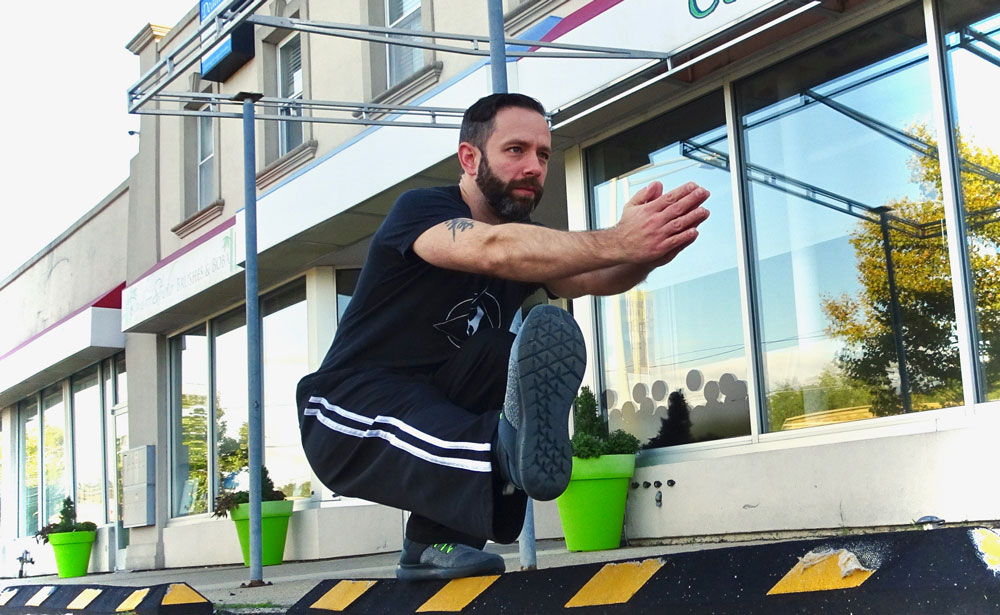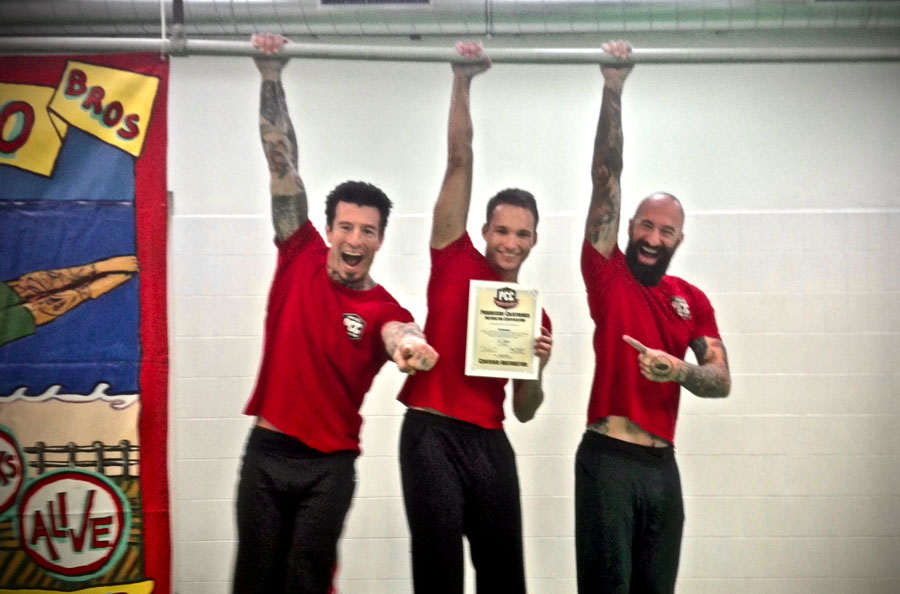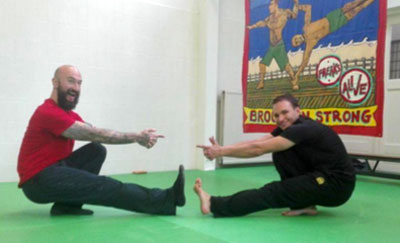
Progressing in your calisthenics quest doesn’t always mean that you master the next big movement or duplicate a zany stunt. Another way of scaling the difficulty of just about any particular exercise is to simply employ time. No, I don’t mean making your workouts longer—in fact this method could make your workouts shorter—what I am referring to is time under tension.
The phrase “time under tension” refers to how long a muscle (or group of muscles) is under stress for a given rep or set. This can be achieved by lengthening the concentric, eccentric or pausing phase of an exercise.
I used this technique back in my weight lifting days. In fact, most methods of progressive resistance in calisthenics can apply to the weight room as well. When I was focused on lifting (and training people to do the same), there were times I would use less weight, instead choosing to focus on a slow tempo. Oftentimes, my clients would question my method, as they were only thinking in terms of lifting as much weight as possible. But to their surprise, when I had them do a 3 second eccentric and concentric (3 seconds down and 3 seconds up) movement for each rep, they would burn out sooner and get more out of the exercise—even at less external resistance.
Of course, you are also not limited to a 3 second tempo, you can also slow it down more so, such as a 5 second tempo. You could even add pause at the bottom of your movement. All of these are effective ways of increasing your muscles’ time under tension.
The concept of time under tension is arguably even more important when applied to bodyweight training. Because of our minimalist approach (and equipment set-ups), we are constantly using methods of increasing resistance without adding external weight. In fact, calisthenics newbies often wonder how it’s done. Well, again, time under tension is one of the least complicated ways!

In fact, for me personally, when I put the weights away and became completely calisthenics focused, I was able to achieve very high rep counts in my basic 3 exercises: push-ups, pull-ups and squats. For a while, I thought progressions were the only way to go from there, so that is what I did.
Over the course of time, and after many steps, classic push-ups became feet-elevated push-ups, two-legged squats became pistol squats, and pull-ups became muscle-ups.
Eventually, my numbers started to pick up again. So I thought back and remembered the slow tempo workouts I use to do. I decided to give it a shot and they were more challenging than I expected. You see, not only does the slow tempo maintain the tension on the muscles for longer, it also requires you to be more attentive to form, thus giving a greater yield from every single repetition.

Feel free to experiment. I’ve found that pausing at various points throughout the range of motion (as opposed to just the top or bottom position) can help overcome sticking points. Think about a pull-up, for example, where you pause for 2 seconds at the top, then again with your elbows at 90 degrees, then 120 degrees, with a final pause at the dead hang—ouch!) Furthermore, you can even experiment with super-slow reps, such a “the one minute push-up” which is 30 seconds on the way up and 30 seconds on the way down! Just make sure to take your time on the eccentric phase for max results!
Remember, fitness isn’t just being able to knock out 100 push-ups, or bench press double bodyweight: it is more about embracing the process, living in the present, and ranking quality over quantity when it comes to movements. Take it slow, build real strength, and focus on your form: you will see quality changes!
***
Ray Shonk, PCC is a personal trainer in Grand Rapids, Michigan, an adjunct professor at GVSU and the owner of Quest Fitness. In 2017, he authored his first book, appropriately titled, The Calisthenics Quest. Ray specializes in Calisthenics, Sports Performance and Martial Arts training. When he is not training, Ray spends time brewing beer, and enjoying time with friends and family. Learn more at www.questfitnessgym.com




